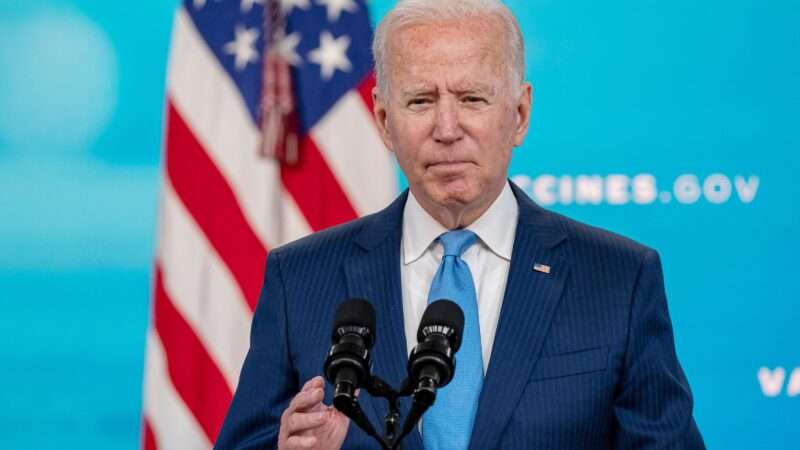
The White House says a COVID-19 mandate that President Joe Biden plans to impose on private employers, which “will impact over 80 million workers,” is all about “Vaccinating the Unvaccinated.” But officially, that mandate is aimed at protecting workplace safety, and the difference between those two descriptions could make it vulnerable to the flood of litigation it will provoke.
A month after he was elected, Biden called vaccination against COVID-19 “a patriotic duty” but said, “I don’t think it should be mandatory.” On July 23, White House Press Secretary Jen Psaki reiterated that position, saying it’s “not the role of the federal government” to require vaccination.
A week later, Rochelle Walensky, director of the Centers for Disease Control and Prevention, insisted “there will be no federal [vaccination] mandate.” Last month, Anthony Fauci, Biden’s top medical adviser, agreed that “you’re not going to get mandates centrally from the federal government.”
If you are determined to reconcile those assurances with the rule that Biden announced last week, which applies to all businesses with 100 or more employees, you could note that it does not technically require people to be vaccinated, since they can submit to weekly COVID-19 testing instead. But the choice between those two options—especially if employees have to foot the bill for testing—is likely to encourage vaccination, which is what Biden wants.
The problem is that the Occupational Safety and Health Administration (OSHA), the agency that Biden has charged with imposing the vaccination/testing rule, does not have broad authority to fight epidemics or promote public health. Its mission is limited to protecting employees from workplace hazards.
Ordinarily, it takes years for OSHA to finalize new regulations. But the approach Biden has chosen, an “emergency temporary standard” (ETS), allows OSHA to bypass the usual rule-making process: It can issue a rule that takes effect immediately without advance notice, public comment, or hearings.
Although the ETS option is undeniably convenient, it requires a special justification. OSHA must “determine” that its ETS is “necessary” to protect employees from a “grave danger” caused by “new hazards” or by “exposure to substances or agents determined to be toxic or physically harmful.”
Those assessments are subject to judicial review, and OSHA’s track record in defending emergency standards suggests why it rarely takes this route. Six of the nine emergency standards that OSHA issued between 1971 and 1983 were challenged in court, and those challenges were partly or fully successful in all but one case.
On July 21, when OSHA published an ETS requiring specific COVID-19 precautions in health care settings, it was the first time the agency had attempted an emergency standard in 38 years. It was also the first time OSHA had cited the danger posed by a communicable disease as the justification for an ETS.
Whether COVID-19 constitutes a “grave danger” to employees depends on conditions that vary widely from one workplace to another. The danger is greater, for instance, when work requires a lot of close interaction (as in meatpacking plants), when the vaccination rate is low, or when many employees are relatively old or have preexisting medical conditions that make them especially vulnerable to COVID-19.
In a workplace where the employees are young and healthy, by contrast, their risk of dying from COVID-19 is very low even if they are not vaccinated. And if someone’s work does not entail close contact with fellow employees, his risk of catching COVID-19 from unvaccinated colleagues may be negligible or nonexistent.
Considerations like these also factor into the question of whether OSHA’s ETS is “necessary.” It would be hard to justify a rule that made no exceptions for employees who work from home, for example, or for employees who are resistant to COVID-19 because of their immune responses to prior infections.
A broad rule with no exceptions better serves Biden’s goal of increasing the overall vaccination rate. But it will also be harder to defend in court.
© Copyright 2021 by Creators Syndicate Inc.
from Latest – Reason.com https://ift.tt/3tFdftz
via IFTTT